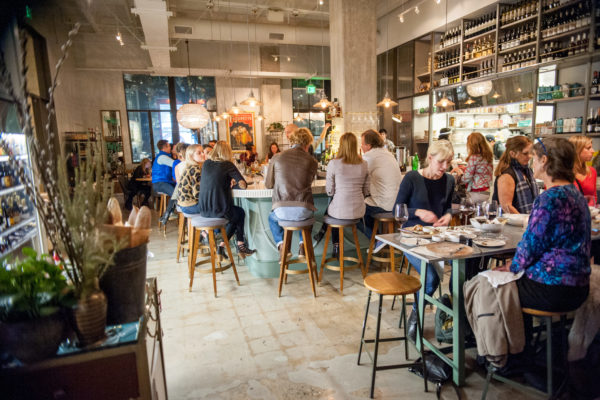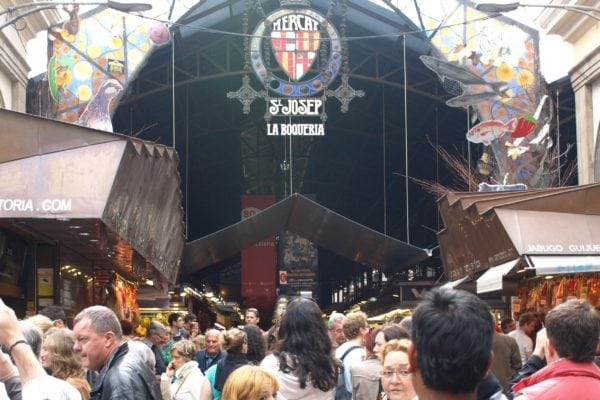ECONOMICS
Behind a $32 Crab in Los Angeles… And Beyond
Food costs, delivery costs, labor costs — restaurant economics go far beyond what the customer sees on the bill. Last week, it was the $30 nachos at Empellon in New York; this week: a $32 soft shell crab dish in Los Angeles. A restaurant critic penned an analysis as a follow-up to a review of the restaurant, where she was critical of the dish’s price. In a follow-up conversation, the restaurant the owner explained his cost structure and the reasoning behind the dish’s price (in this case, the use of an expensive ingredient, the crab). The piece explains how restaurateurs approach pricing, this one in particular aiming for food cost at an average of 25 percent of menu prices.
Similarly, the Wall Street Journal profiles one small business, Miami’s Crust, a two-year-old restaurant that’s already posting a profit. The piece details many specific strategies applicable to any restaurant business: intentionally staggering reservation times to get the most turns out of each table (an average of 2.5), thoughtful design, a favorable lease, constructing the menu so that the most popular items are also the most profitable, using fewer ingredients to cut costs, investing in staff, and more.
To understand these economics gives consumers a better handle on restaurant pricing… but does understanding why a dish’s price passes the $30 mark make it any easier to fork over a not-inconsequential amount of cash to enjoy it?
LEGACY
Where Does Thomas Keller Go Next?
How do you build a restaurant legacy? The New York Times profiles Thomas Keller, who talks about future plans to step away from the restaurants that are nearly synonymous with his name. The piece covers Keller’s emotions intently, but also begs the larger question: is The French Laundry still The French Laundry without Thomas Keller?
Apparently, that’s the question the lauded chef is trying to answer: how does he run and grow his businesses to survive without him? The problem isn’t just with Thomas Keller’s name — many feel that his type of fine-dining is losing its audience. Regardless, Keller, like many chefs of his generation, will eventually step away, likely hoping his restaurants will continue on their own merit, distanced from his name.
In business, this is called succession planning, and its part of a successful business plan. In a figurehead-driven business, as restaurants have become, the challenge becomes striking the proper balance. This methond of business-building is a double-edged sword. It can be powerful because you have a public avatar of a person to build around. The other edge: without that person, the business can take a major hit. For Keller, The French Laundry is tied closer to his persona than some others, like Bouchon, and to distance himself from the former could mean large changes to the iconic restaurant (which just went through a massive kitchen renovation). Still, with no plans or timeline, it could be some time before we see any changes or movement at the famed resaturant as Keller makes decisions about its future.
REGULATIONS
A New Law for Home-Cooked Food in California
A new law proposed in California would “permit the sale of prepared meals and other foods from small-scale home kitchen operations,” extending the current law that allows sales of non-perishable food (like granola) from home kitchens.
Food is the new transportation in a sharing economy that has seen such successes as AirBnb and Uber. But, like transit and hotels, the food space is heavily regulated by measures put in place far before the sharing economy got started. Unsurprisingly, the legislation is sponsored by a bay-area startup connecting small-scale home cooks with customers who want to purchase their food. And while, on the surface, legislation of this type seems like a boon to home cooks, concerns about creating tech-company wealth on the backs of these home cooks are offering many cause for concern. Plus, food-sharing doesn’t scale the same way as ride-sharing; home kitchens aren’t set up to mass-produce food. “It’s not like anyone is getting rich off of doing this in their home and if a for-profit company took a good chunk, it wouldn’t be worth doing,” one home cook says.
Different states maintain different regulations around home kitchens and variations of this business model are already working in some states (the particular startup in question already operates in Oregon and Washington). Still, the proposed regulations underscore the importance of the sharing economy in the food space. And as with transportation and home-sharing, food sharing could come at a huge price to safety.
AWARDS
Food and Wine Names Best New Restaurants of 2017
Last week, Food and Wine announced its best new restaurants of the year. The list spans the usual cities: New York, San Francisco, Chicago, Portland — but also gvies a nod to the booming food scenes in Los Angeles, New Orleans, and Philadelphia. The well-rounded list includes the fancy (Daniel Rose’s Le Coucou in New York) to the more casual (the all-day Tartine Manufactory in San Francisco), accessible soup (Rooster Soup Co., Philadelphia) to Caviar (at Chicago’s Roister, from Grant Achatz and Nick Kokonas). Congrats to the “10 most magnetic openings of 2017.”
Digestifs:




